F-15S Agile Eagle
-Lore-
In 1985, the Pulchriturian Royal Air Force (PRAF) aimed to explore ways to improve on their successful air superiority fighter & interceptor; the F-15 Eagle. With international rivalries growing slowly but noticeably since the end of the Gruneheimian Conflict of 1954, Gaia's previous major conflict, the PRAF predicted the need for military aircraft capable of using shorter, bombed-out runways, or shorter & rougher takeoff spaces in the prediction that airstrips would likely be targeted in a first strike. Pulchriturian interceptors were primarily in trouble, this being their F-15 Eagles, an aircraft unsuitable for short takeoff and landing distances.
So the PRAF came to the Pulchriturian Technical Institute (PTI)--a joint organization consisting of Pulchrituria's most successful engineering corporations which included the manufacturer of the Eagle--and commissioned for a special F-15D with modified avionics to allow the collection of flight data, a more-powerful pair of engines derived from the F-16 lightweight fighters, variable engine nozzles that allow for thrust vectoring up to 20 degrees in all directions, and front canards attached to the front-most sides of the fuselage just next to the variable intakes--sizable canards taken from the production line of the Pulchriturian Royal Navy's (PRN) F/A-18 Hornets.
The aircraft rolled off the assembly line by 1986 and was named the F-15 F-SCD (First-Strike Condition Demonstrator).
Years of research went by, with the PTI and PRAF finding takeoff distances reduced by 10-15% depending on conditions & weapon loads, landing/stopping distances reduced by up to 30%, and controlled flight at up to 85 degrees of AoA.
Within this period of research and testing, the aircraft's maneuverability in flight was tested and adjusted over time, proving to be more maneuverable in a dogfight than the production F-15's due to its greatly-improved maneuverability--provided by 3-D thrust vectoring & canards and an incredible thrust-to-weight ratio--and more potent in BVR fights due to its greater acceleration and turning capability. Improvements in flight performance only improved further as the PTI began their research in intelligent flight control systems, using the FCS of the PRAF F-16 as a baseline and applying it to the F-15 F-SCD
Due to this projected improvement in performance over the standard Eagles, the PRAF greenlit and commissioned a production variant of the F-15 F-SCD to be in production by 1996, equipped with the F-15E's radar & avionics--including software which allow for air-to-ground weapon compatibility--and compatibility for the CFT of the standard Eagles to allow additional fuel capacity for less drag than external tanks.
The aircraft came to be named the F-15S "Agile Eagle", seeing service for the first time in 2002, flown by 10 PRAF pilots & their trusted WSO's over Tanruil during the Three-Week War, wearing Tanruilian Air Defense Force F-15C liveries to assist Tanruil in their air and ground campaign against Natsik invaders.
The war ended with the Agile Eagles scoring a 31:0 kill ratio, with the PRAF flight crews left unnamed and the 10 disguised Agile Eagles being handed to the Tanruilians as a token of allegiance.
-Description-
With the boring part out of the way--meet the F-15S Agile Eagle, a fictional, supermaneuverable, multirole, twin-engined fighter based on the F-15 STOL/MTD or F-15 ACTIVE. 3-D Thrust Vectoring and canards ripped from the tail-end of an old Hornet allow for maneuverability far beyond the standard for Eagles, and shorter takeoffs & landings in case you have to takeoff from or land on the beaten path--all making up the capabilities of an F-15 ACTIVE that made it into production.
It wears the same paintjob as the dark grey Strike Eagles that came 11 years before its introduction, just to show how it was made on the same production line with many parts similar to its ground-pounding brother.
Using a 20mm M61A1 stuffed in a gunpod, AIM 9X's, and AMRAAM's, take advantage of the aircraft's otherworldly maneuverability both within and beyond visual range of bandits.
Or equip Mavericks & Paveway II's to show that even hostiles on the ground are unsafe from the Agile Eagle's speed and precision.
-Loadouts-
Current Loadout - 2x Drop Tank, 2x AIM-9X, 6x AIM-120C
Alt. Loadout 1 - 2x GBU-12, 2x AGM-65D, 2x AIM-9X, 4x AIM-120C, 1x Drop Tank - https://www.simpleplanes.com/a/3w47iz/F-15S-Agile-Eagle-Alt-Loadout-1-Strike
Alt. Loadout 2 - Clean - https://www.simpleplanes.com/a/M8xW01/F-15S-Agile-Eagle-Alt-Loadout-2-Clean
-Controls-
Normal [Throttle]/[Pitch]/[Roll]/[Yaw]/[LandingGear]
- [Throttle = 85% to 90%] Military Power
- [Throttle = 90% to 100%] Afterburner
[VTOL] Elevator Trim (Inverted)
[Trim = -100% to 0%] Flaps (Inverted)
[FireGuns] Fire 1x 20mm M61A1 Vulcan
[AG1] Lights
[AG2] Reduced-Stability Mode (RSM)
[AG8] Master Arm
Hardpoint Activation Groups
[AG3] Wing Hardpoint 1B Drop Tank Release
[AG4] Wing Hardpoint 1A AIM-9X Manual Release
[AG5] Wing Hardpoint 1C AIM-120C Manual Release
[AG6] CFT Hardpoint 1 AIM-120C Manual Release
[AG7] CFT Hardpoint 2 AIM-120C Manual Release
-Cameras-
[Cam1] Targeting Pod View (Alt. Loadout 1)
-Author’s Notes-
- Fuel and gun ammo is unlimited.
- On takeoff, I recommend 60% trim with 100% flaps. Get to between 270 and 280 km/h and give downwards taps for the pitch to avoid tail striking (For keyboard users). The trim is enough for the aircraft to takeoff, so all you have to do is prevent tail strikes.
- I recommend having a little upwards VTOL, especially at lower speeds.
- At high AOA, roll input affects yaw maneuvering by inducing it in the opposite direction. Rolling right will cause left yaw and vice versa.
- To perform a cobra maneuver, slow to 680 km/h, throttle to military power/afterburner (if you haven’t already), activate RSM, and pitch up. Apply taps of upwards pitch as you level out and deactivate RSM to slow down the nose as it levels out.
- To perform a kulbit maneuver, slow to 400 km/h, activate afterburner & RSM, and pitch up. You must be level and around the height of your kulbit or you will lose yaw stability.
- To perform a falling leaf maneuver, slow to 680 km/h, activate RSM, and roll & pitch up simultaneously to initiate the spin. Then, once the spin initiates, you can use yaw to speed up/slow down the spin to your liking. Military power will make things more managable but, if you insist on spinning so quickly that you look as though you have no control over the flatspin, use afterburner. To recover, disable Overpitch and roll with the spin until you stop stalling. Warning: You may be significantly lower in altitude than where you started.
-Updates From Last Post-
- Canards now can be used in braking above a certain speed.
- Actual 3D thrust vectoring added, along with more complex code to simulate the in-lore fly-by-wire.
- Slight alterations to the code to make the aircraft fly with just a bit more weaknesses.
- L O R E to relate it with the fictional world I'm writing about.
-Credits-
- @OkaNieba - for the original 2-seat F-15
- @ReinMcdeer - for the code I modified, the STOL/MTD canards, and the SU-30SM on the third screenshot
- @Guyfolk - mainly for the aircraft I used (or tried to use) as a reference for flight performance, relative to the performance I was going for
- @BritishSquid - for being the second F-15 in the second picture
Specifications
General Characteristics
- Predecessor F-15 STOL/MTD (F-15S Agile Eagle (V0))
- Created On Windows
- Wingspan 42.9ft (13.1m)
- Length 63.8ft (19.4m)
- Height 19.0ft (5.8m)
- Empty Weight N/A
- Loaded Weight 55,488lbs (25,169kg)
Performance
- Power/Weight Ratio 1.044
- Wing Loading 42.0lbs/ft2 (205.1kg/m2)
- Wing Area 1,320.6ft2 (122.7m2)
- Drag Points 1709
Parts
- Number of Parts 328
- Control Surfaces 10
- Performance Cost 1,729

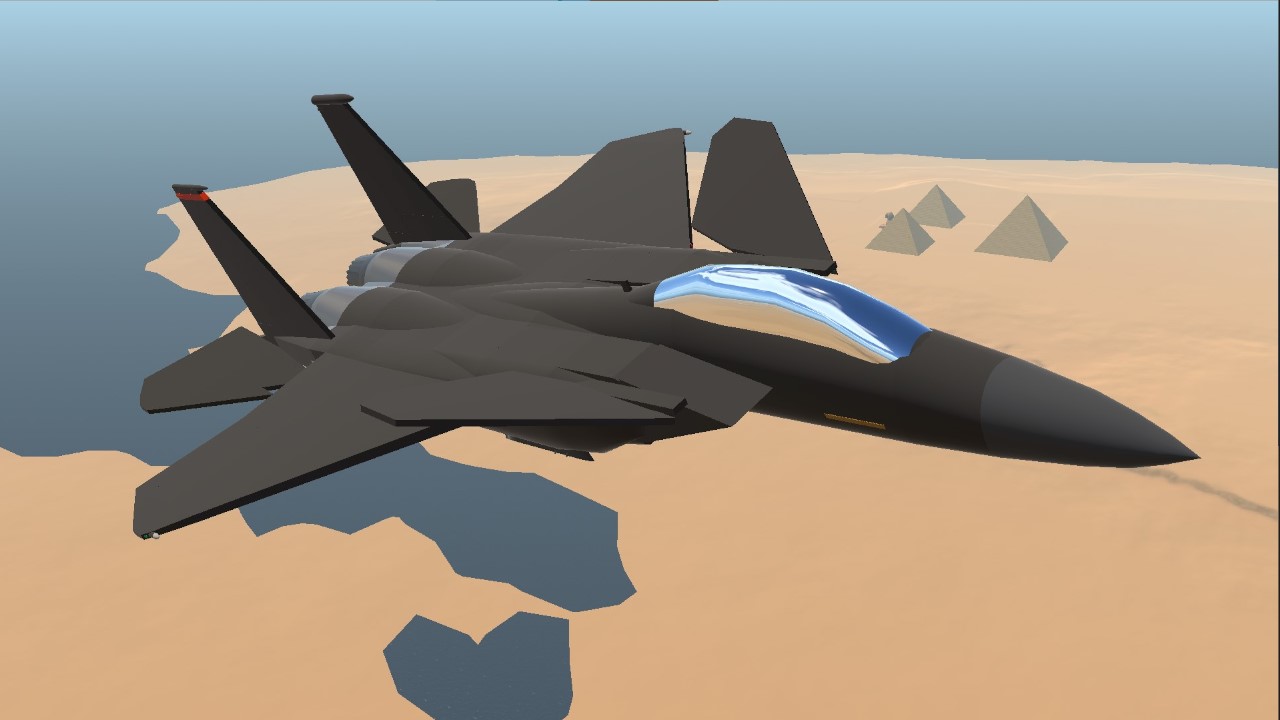
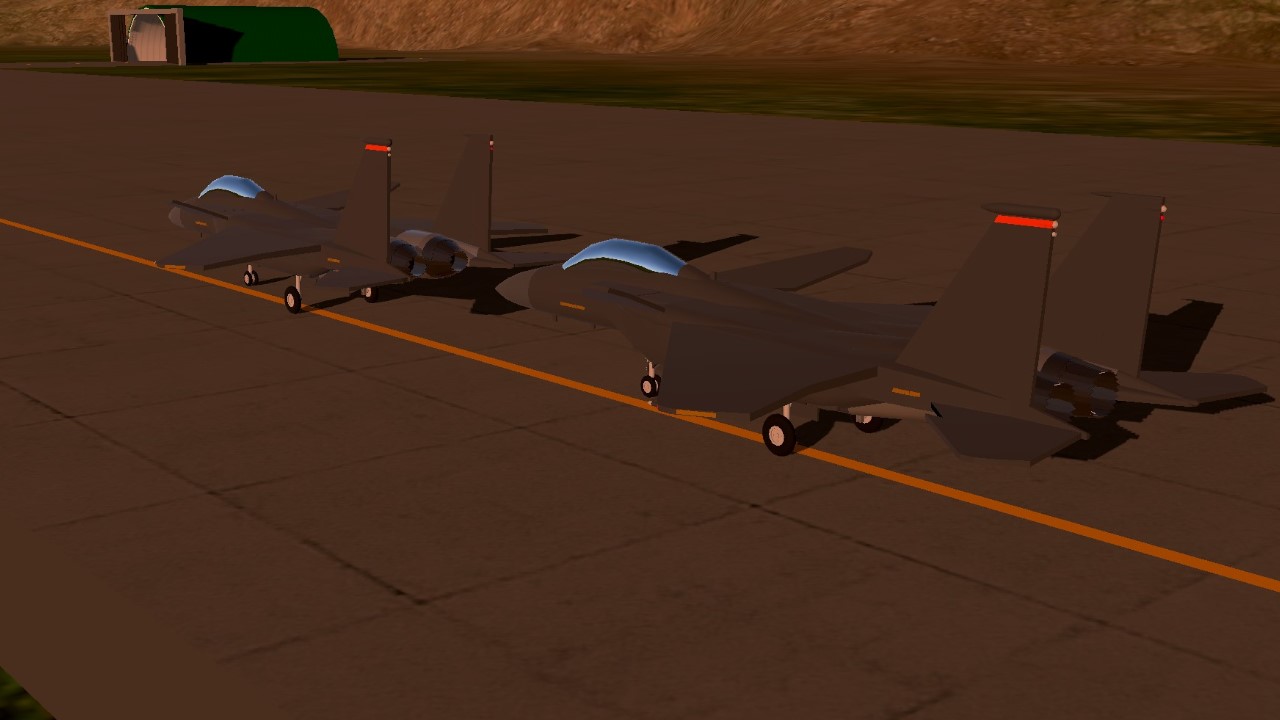
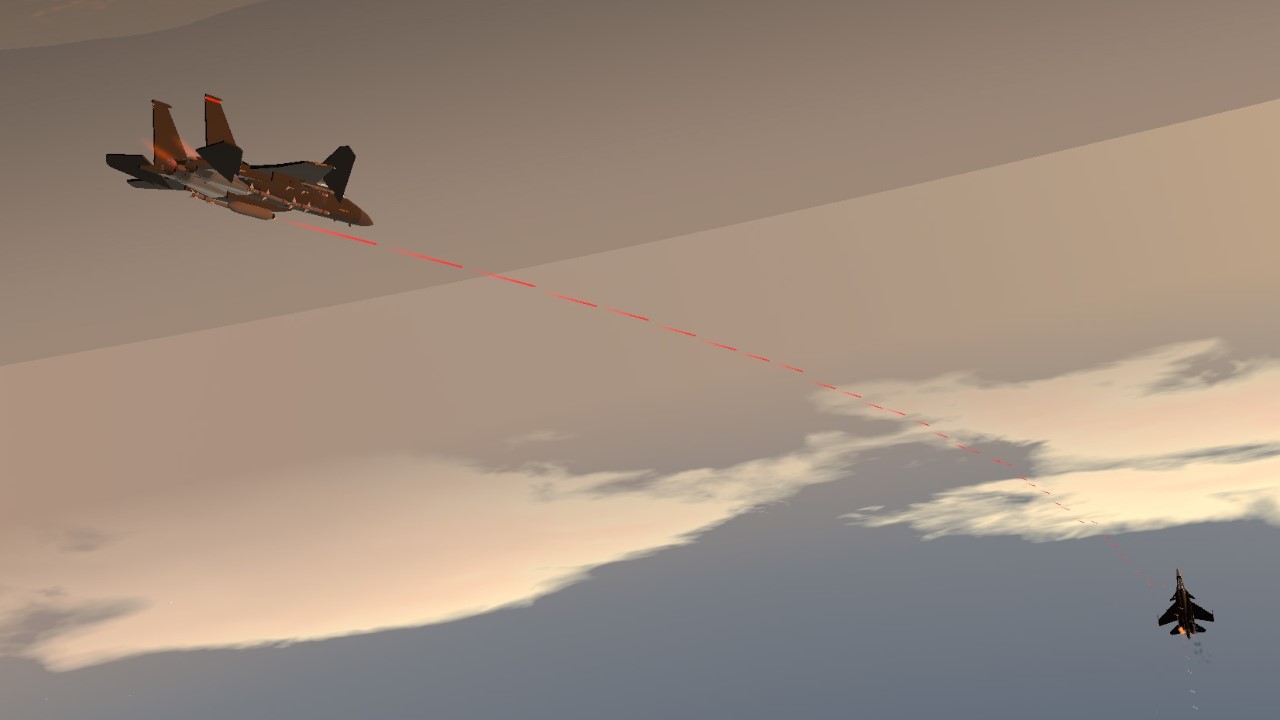
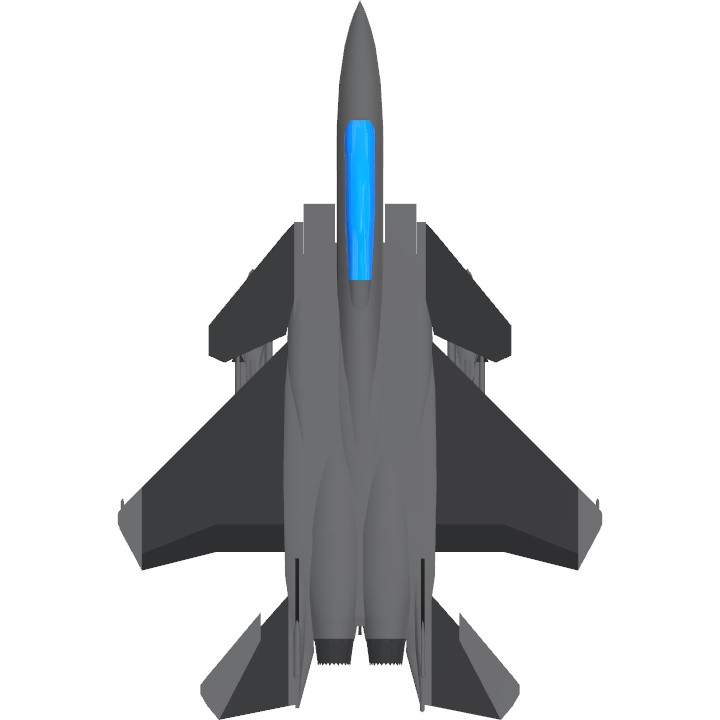
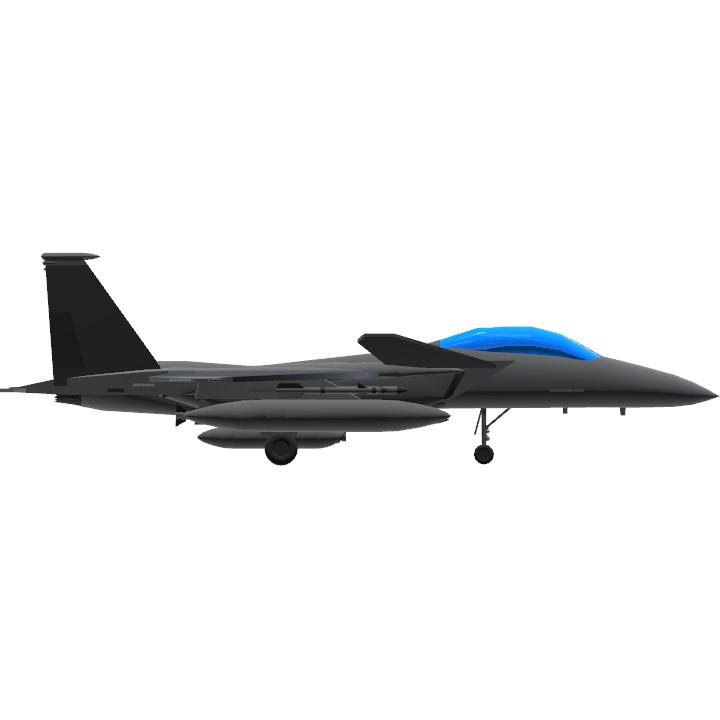

Credits:
@OkaNieba
@ReinMcdeer
@GuyFolk
@BritishSquid
@Gryphus322
Nice.
If you can get the nose right where you left it first time, you are a god lol.
Even I can't do that.
@GuyFolk I couldn't get the nose to stay right where it is while PSM'ing yet though, but the nose movement while in RSM is definitely less now compared to before. PitchRate truly is a magical variable lol
@Gryphus322
Good job and whoosh... now you can't make plane without PitchRate because it is too good to miss out. :P
Joke aside, RollRate, YawRate and PitchRate are holy trinity and they are the first thing I've learn in building Funky Tree plane, they make so much difference by taking the burden of correcting unwanted movement away from the pilot.
And also, I've been building FT stuff for years, if I'm not get good at it then no one can lol.
@GuyFolk Over this afternoon, I've added the pitchrate stuff to the TVC, the elevators, and the canards and it's now capable of recovering from RSM completely on its own at any speed above 300 kmh
Why are you a genius? pls teach me your ways lol
@Gryphus322
It's not even the final form lol.
@GuyFolk That...is a fair point. I think I will try using PitchRate and see how it goes. I mostly just left it out because I felt satisfied with how it flies.
Though now, knowing it can be even better...hehe.
I've noticed that you use RollRate and YawRate but no PitchRate?
You missing out big chunk of fly by wire I think.
PitchRate can dampen your unwanted pitch movement so the nose will more or less stay where you left it.
Maybe adding PitchRate in elevator and canards and tvc the way you add RollRate and YawRate.
@WolfHunter9111 Looking forward to it!
A new candidate for RD Cockpits soon